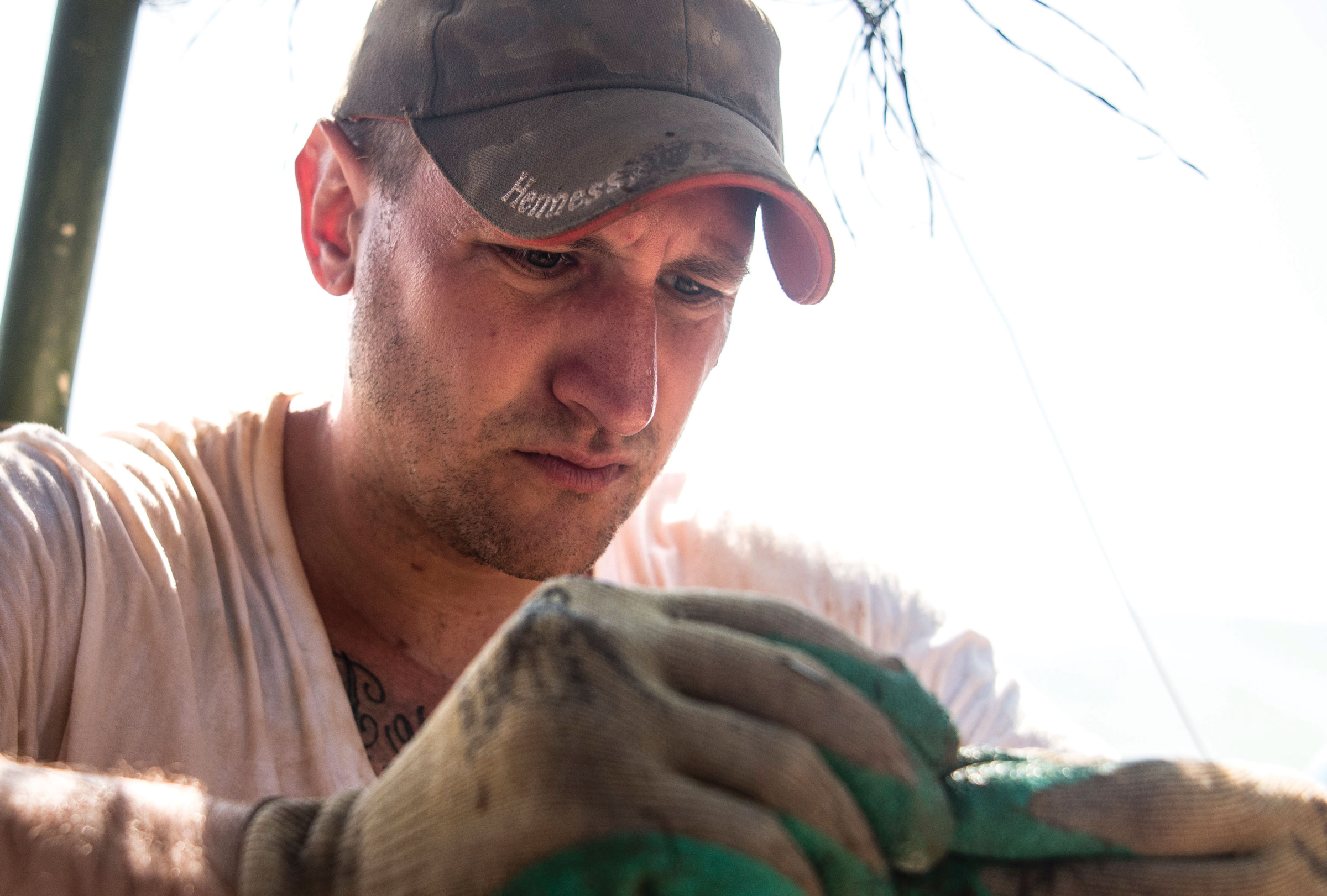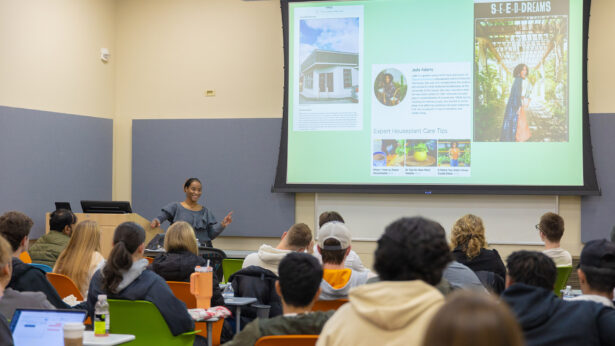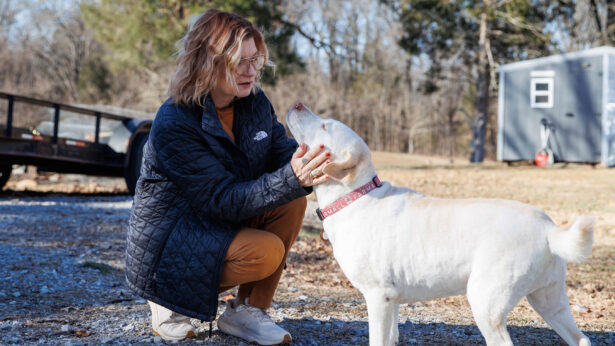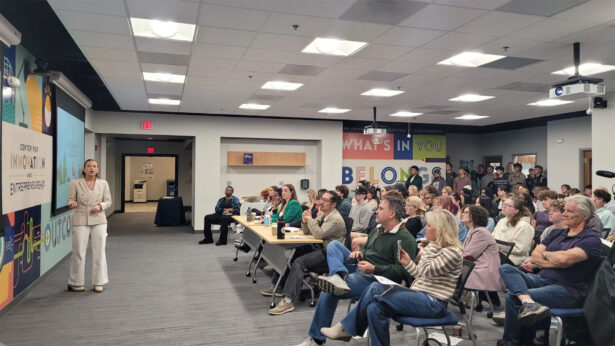By Dan Carlinsky
Photos Courtesy of the Defense POW/MIA Accounting Agency
Standing shin-deep in a flooded rice paddy in Vietnam, shoveling and hauling buckets of soil, and screening the contents through quarter-inch wire mesh for hours on end hardly seems like the most pleasant way to spend three weeks. But, to Kyle McCormick, it’s just what work should be: satisfying.
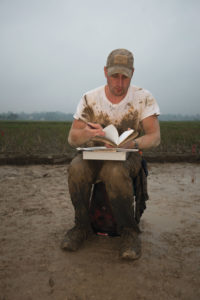
McCormick (Knoxville ’15) is a forensic anthropologist with the Defense POW/MIA Accounting Agency (DPAA), the federal government bureau that searches the world for service members who didn’t return from war. The DPAA’s list of the missing includes more than 1,500 from the Vietnam War, as well as some 7,600 from the Korean War and nearly 72,000 from World War II. Even after 80 years, the hunt goes on.
On his mission in Vietnam, McCormick was pursuing evidence of a plane and its pilot lost in 1972.
The DPAA employs a staff of 600—half civilian, half military—and counts on its roster a variety of specialists, including historians, mountaineers, divers, combat medics, explosive ordnance technicians, life-support equipment specialists, forensic photographers, linguists and anthropologists like McCormick. Teams from the agency perform both preliminary site investigations based on historical research and, when a site is judged promising, follow-up recovery missions that feature full-scale excavation.
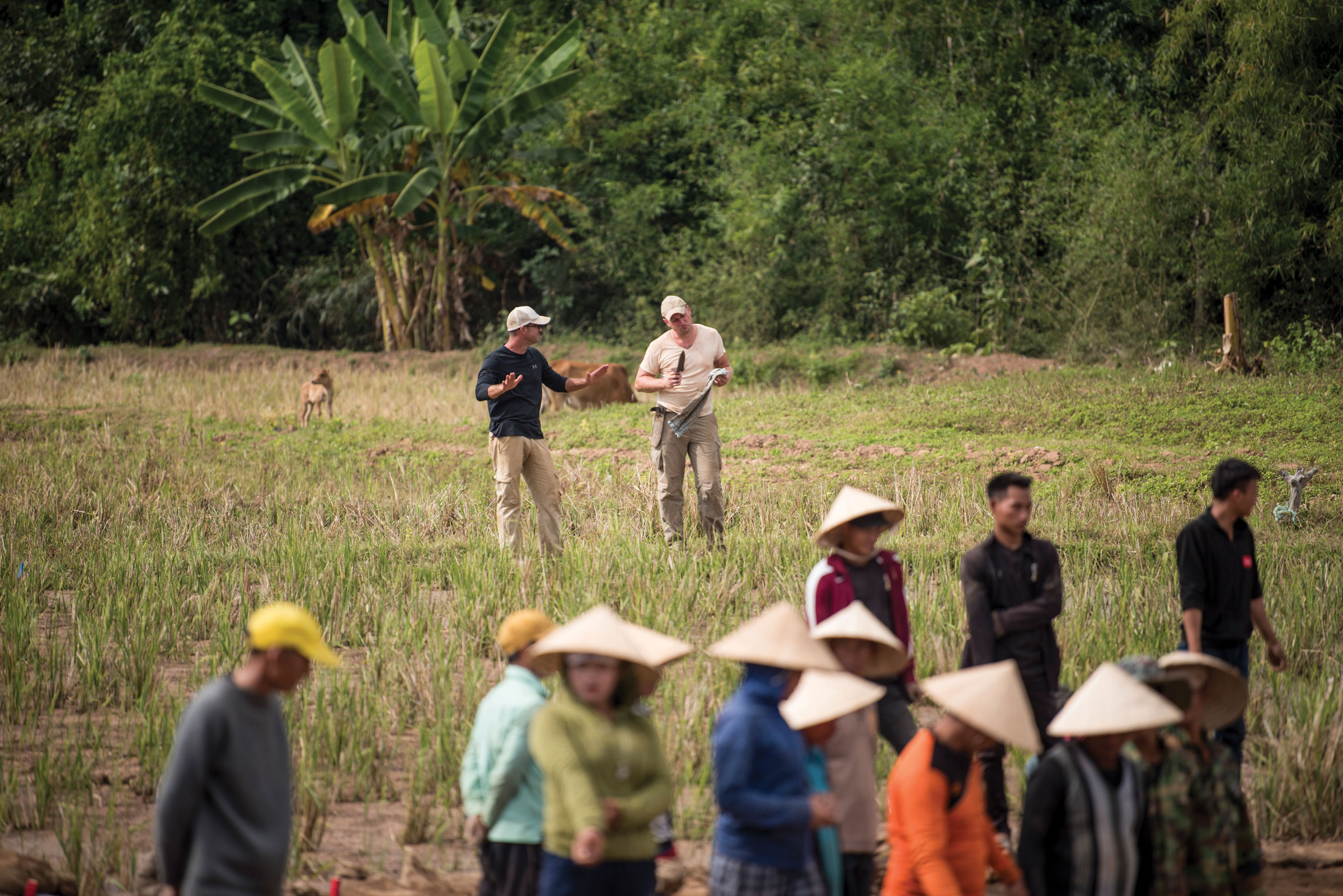
McCormick typically spends two to three months a year in the field. On that mission in Vietnam, he was the scientific recovery leader, directing the dig. He calls the site his favorite.
“I was constantly soaking wet, but I loved it,” he says. “You’re physically and mentally exhausted every day. Since the taxpayers are footing the bill, I want to be as efficient as I can, and I approach the science of the job very seriously, so as the scientific leader I feel a lot of responsibility. But, strange to say, it’s relaxing. You’re absolutely removed from modern life.”
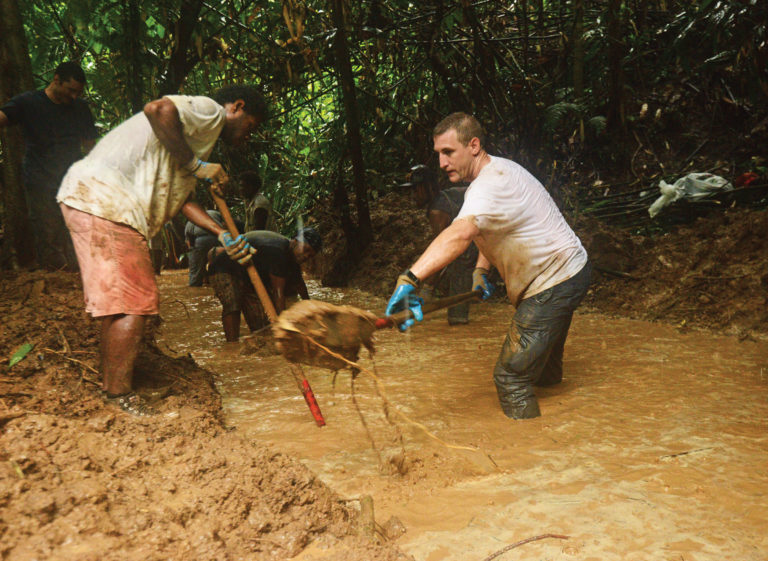
He’s gone on other missions to Vietnam as well as stints in the jungles of Laos and the mountains of Guadalcanal, all physically strenuous and requiring super-careful attention as he and the team shovel, scan, sort, sift and scrutinize, calling on their own experience as well as the experience of hired local workers.
“The locals have good eyes,” he says. “They can be a great asset. They’ve been working with that soil their whole lives.”
McCormick came to anthropology almost by accident. Studying computer science in a Michigan community college, he took a class in human evolution and was hooked. “I couldn’t get enough of it,” he recalls. “I wanted to be in a field where I have a passion, and for me that wasn’t computers anymore.”
He swiftly changed direction and studied anthropology for a B.A. at Michigan State, then earned a master’s at Chico State in California and began a doctoral program at Binghamton University in New York. He tells what led him to Tennessee:
“My dissertation advisor at Binghamton was (Professor of Anthropology) Dawnie Steadman. She’s among the best leaders and hardest workers I’ve ever met, someone who really facilitated my growth as a scientist. She moved to Knoxville to become head of the school’s Forensic Anthropology Center. I followed. It cost me time transferring, but it was worth it. The opportunities at UTK for forensic anthropology students—graduate and undergraduate—are unparalleled.”
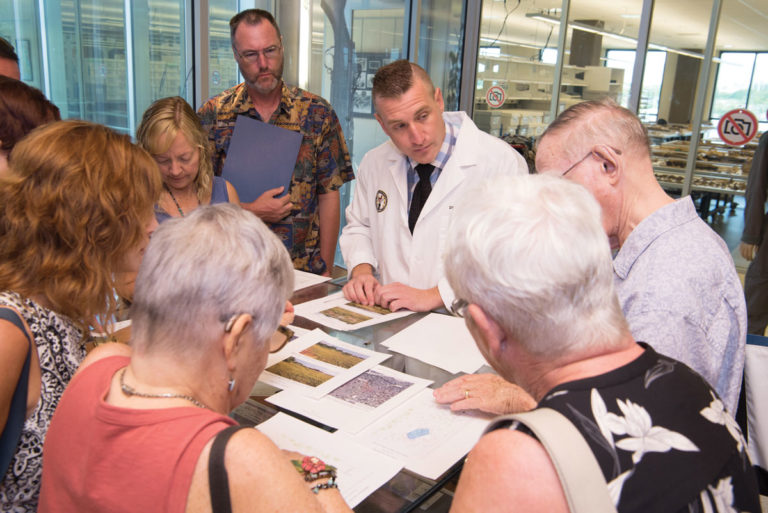
Before he arrived at Tennessee, McCormick landed a forensic science fellowship for advanced grad students with a forerunner of the DPAA. It was, he said, “effectively a five-month job interview.” After earning his doctorate in 2015, he signed on as a scientific recovery expert with the agency, newly created in a consolidation of several earlier offices within the Department of Defense. He works out of the agency’s main lab at Joint Base Pearl Harbor-Hickam in Hawaii, which calls itself “the largest and most diverse skeletal identification laboratory in the world.”
Steadman, UT Knoxville Chancellor’s Professor in anthropology, said, “The DPAA has an important mission to recover and return to families the remains of those lost in past conflicts. We are proud that so many of our students have joined this mission after graduating from the anthropology department at UTK.”
Like many at the DPAA, McCormick can trace at least some of the job’s appeal to his own family history:
“My grandpa—my mother’s father—fought in World War II. He was an Army first lieutenant with the 9th Armored Division. He was lucky: He came home. He didn’t talk much about the war, but I knew that he was in the Battle of Remagen, when the Allies invaded Germany, March 7, 1945. His service has always been a point of honor for me.
“My Uncle Tommy—my mother’s brother—inherited his service medals. They mean a lot to him, but recently, given my profession, he decided to send them to me. That was a really big deal. My mother let me have a pair of binoculars that, according to family tradition, my grandpa took from a captured German officer. Now I have them all, plus a book about the battle for the bridge at Remagen, on display in my office. It’s kind of a little shrine.
“My work is for guys who weren’t as lucky as my grandpa.”
The serviceman whose disappearance brought McCormick and his team to that rice paddy in Vietnam was a 28-year-old Navy pilot who left an aircraft carrier in the Gulf of Tonkin on a night reconnaissance mission over North Vietnam in an A-7A; he never returned.
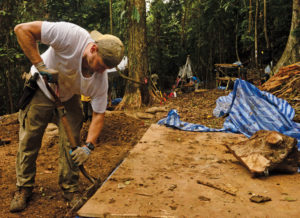
McCormick says advances in forensic science and technology, including DNA analysis, are helping to identify those buried in U.S. military cemeteries as unknown, as well as greatly improving recovery work in places like Vietnam.
“That crash site was investigated and excavated multiple times in the 1990s, without success,” he says. “Recovery efforts back then were of limited scope. Archaeologists were advisors; we weren’t running the show. Today an archaeologist runs the excavation. We take a more scientific approach.
“I’m not saying the work done in the early days was bad; it’s that they were inventing the wheel. As an agency, we’ve matured significantly. We return to take a fresh look at a lot of sites that were closed years ago, and it can pay off. This site was one of them.”
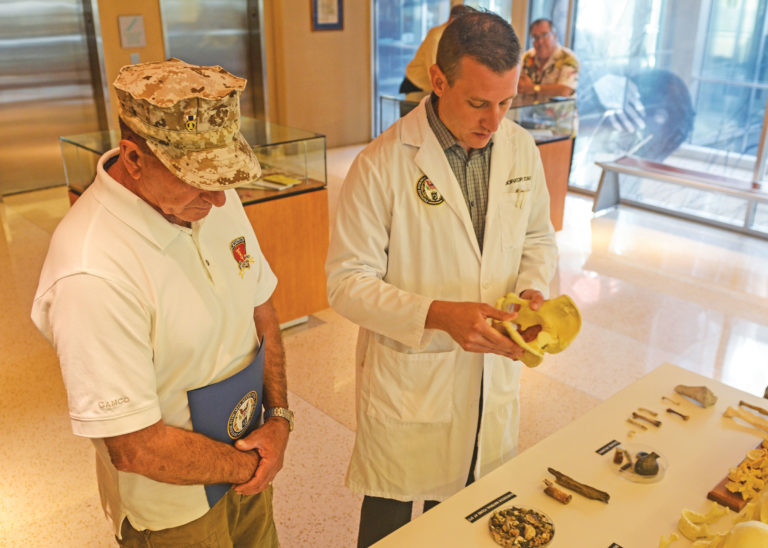
Using stakes and string, recovery team members section the ground into squares four meters on a side. They scan with metal detectors, then take shovels to one square at a time and form a bucket line to transfer the soil to a screening station, where it’s carefully sifted in hopes of revealing human remains or other evidence to be sent back to agency labs in the U.S. for analysis.
Excavating to search for human remains is never without problems—working in a rice paddy is especially tough—but sometimes a surprise turns up. McCormick recalls the turning point in the recovery mission in Vietnam:
“In Southeast Asia, there’s a lot of scavenging of metal, so if you’re hoping to come up with part of a wrecked plane, you won’t find big pieces. Maybe something the size of a quarter. You’re not going to find a wing.
“That day, I was digging during lunch with my team sergeant to make sure we had enough buckets filled for the rest of the team to screen after the break. I remembered that, when I was working at a site in Laos in similar ground conditions, I pulled up a small piece of flight helmet. Just as I was telling my team sergeant that story, incredibly, I found a piece of helmet.
“I said, ‘I can’t believe what just happened! Now let’s have another really unlikely event: Let’s find a tooth.’ In Southeast Asia, the soils are acidic—they eat up bones. We find animal bones all the time, but they’re more recent. After so many years, human bones are pretty much gone. Teeth are more resistant, so a tooth is usually all you’ll find.
“The team came back from lunch, and almost immediately we found a tooth! It was quite a serendipitous day.”
Once recovered material is sent to the States, the case is out of his hands; to avoid bias, anthropologists never work on their own finds. “It’s part of our checks and balances,” McCormick explains. “If I recover a set of remains from the field, I’m not going to do the skeletal analysis in the lab. It’s done blind.”
Months later, the agency placed a rosette next to the pilot’s name among the Vietnam missing on a marble slab at the National Memorial Cemetery of the Pacific in Honolulu, indicating that he had been accounted for.
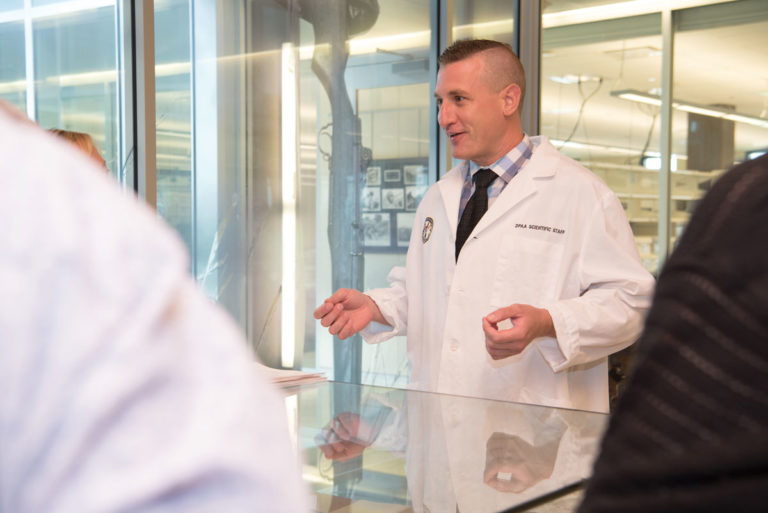
Lately, the global pandemic has blocked McCormick’s travel. His planned investigation mission to Burma was scrubbed in favor of working from home and in staggered shifts in the lab, four hours at a time to allow for spacing by co-workers. He expects to be back on the road this year.
The DPAA’s motto is “Fulfilling Our Nation’s Promise,” which McCormick explains this way:
“As a country, we made a promise to those who served that we’d never abandon them. Keeping that promise is not always easy, but it was an unimaginable sacrifice they made for this country. It’s something we owe them and their families.
“It’s a very noble thing I get to be a part of.”
After Death
By Heather Peters
The Department of Anthropology launched the forensic anthropology concentration for undergraduate students in 2019 after 34 years of training graduate students. Forensic anthropology focuses on studying the human skeleton to help solve crimes. Now about one quarter of all the department’s freshmen express interest in this concentration, in which four undergraduate courses allow students to get direct experience with the Forensic Anthropology Center (FAC).
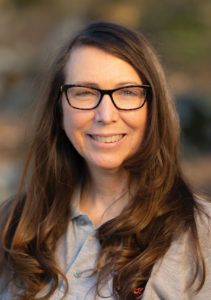
In 1987, Professor Emeritus Bill Bass established the center, which boasts the two-acre Anthropology Research Facility (ARF), better known as the Body Farm, where scientists use research and training to study body decomposition. The Body Farm is the oldest established facility of its kind.
At the heart of the FAC is its body donation program that culminates in the Bass Donated Skeletal Collection, which is comprised of more than 1,800 individuals and is the largest collection of modern skeletons in the United States. Each donation educates, trains and provides a research resource in the study of what happens to a human body after death. Additionally, the skeletal collection has become an important resource in studying modern Americans. An additional 5,000 registered future donors may add to future progress in the field. The average length of time for a donation to be at the Body Farm is two years.
FAC forensic anthropologists assist agencies throughout the country and serve as expert witnesses. Time can be an important factor when trying to identify a possible perpetrator and victim. The FAC runs annual training courses for the FBI and has welcomed international groups of investigators from all over the world.
In FAC’s longest-running research project, which began in 2014, researchers focus on developing tools for capturing identifiable biometrics (fingerprints, face and iris scans) of deceased people to determine how long after death they can be identified. On another project, experts are teaming with researchers from the UT Institute of Agriculture in a multidisciplinary project to determine whether the nutrients released by a decomposing body might alter the coloration of a tree’s leaves enough to aid in a search for a missing person. Additionally, forensic anthropologists are studying how medications in the body impact decomposition rates and developing a protocol by which blunt-force injuries sustained at the time of death can be discriminated from fractures produced by burning.
For more information about the FAC, visit fac.utk.edu.
